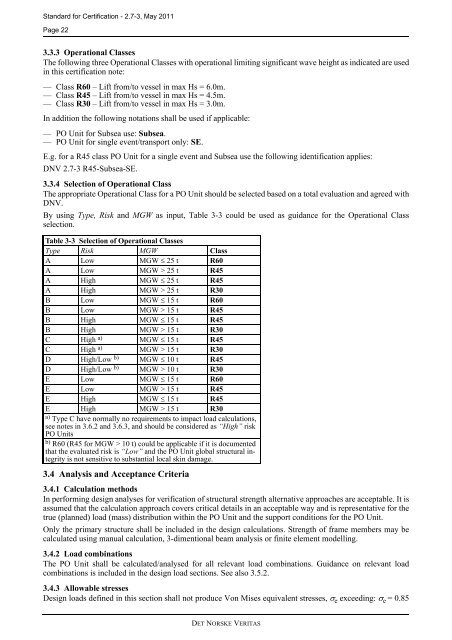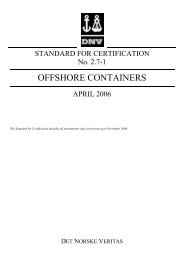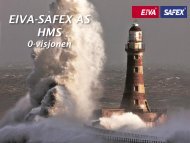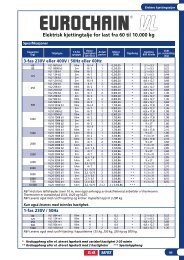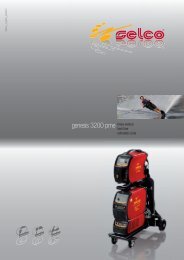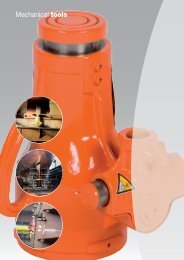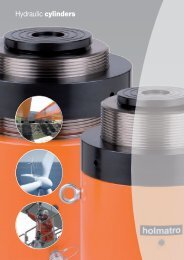atc/filer/DNV Standard 2-7-3 May 2011.pdf
atc/filer/DNV Standard 2-7-3 May 2011.pdf
atc/filer/DNV Standard 2-7-3 May 2011.pdf
Create successful ePaper yourself
Turn your PDF publications into a flip-book with our unique Google optimized e-Paper software.
<strong>Standard</strong> for Certification - 2.7-3, <strong>May</strong> 2011Page 223.3.3 Operational ClassesThe following three Operational Classes with operational limiting significant wave height as indicated are usedin this certification note:— Class R60 – Lift from/to vessel in max Hs = 6.0m.— Class R45 – Lift from/to vessel in max Hs = 4.5m.— Class R30 – Lift from/to vessel in max Hs = 3.0m.In addition the following notations shall be used if applicable:— PO Unit for Subsea use: Subsea.— PO Unit for single event/transport only: SE.E.g. for a R45 class PO Unit for a single event and Subsea use the following identification applies:<strong>DNV</strong> 2.7-3 R45-Subsea-SE.3.3.4 Selection of Operational ClassThe appropriate Operational Class for a PO Unit should be selected based on a total evaluation and agreed with<strong>DNV</strong>.By using Type, Risk and MGW as input, Table 3-3 could be used as guidance for the Operational Classselection.Table 3-3 Selection of Operational ClassesType Risk MGW ClassA Low MGW 25 t R60A Low MGW > 25 t R45A High MGW 25 t R45A High MGW > 25 t R30B Low MGW 15 t R60B Low MGW > 15 t R45B High MGW 15 t R45B High MGW > 15 t R30C High a) MGW 15 t R45C High a) MGW > 15 t R30D High/Low b) MGW 10 t R45D High/Low b) MGW > 10 t R30E Low MGW 15 t R60E Low MGW > 15 t R45E High MGW 15 t R45E High MGW > 15 t R30a) Type C have normally no requirements to impact load calculations,see notes in 3.6.2 and 3.6.3, and should be considered as “High” riskPO Unitsb) R60 (R45 for MGW > 10 t) could be applicable if it is documentedthat the evaluated risk is “Low” and the PO Unit global structural integrityis not sensitive to substantial local skin damage.3.4 Analysis and Acceptance Criteria3.4.1 Calculation methodsIn performing design analyses for verification of structural strength alternative approaches are acceptable. It isassumed that the calculation approach covers critical details in an acceptable way and is representative for thetrue (planned) load (mass) distribution within the PO Unit and the support conditions for the PO Unit.Only the primary structure shall be included in the design calculations. Strength of frame members may becalculated using manual calculation, 3-dimentional beam analysis or finite element modelling.3.4.2 Load combinationsThe PO Unit shall be calculated/analysed for all relevant load combinations. Guidance on relevant loadcombinations is included in the design load sections. See also 3.5.2.3.4.3 Allowable stressesDesign loads defined in this section shall not produce Von Mises equivalent stresses, e exceeding: e = 0.85DET NORSKE VERITAS


